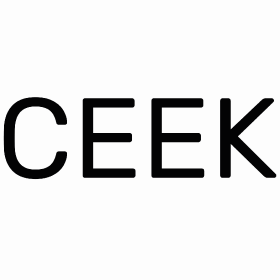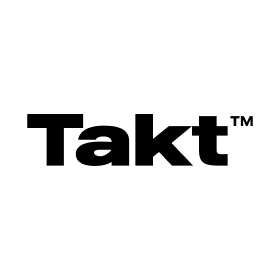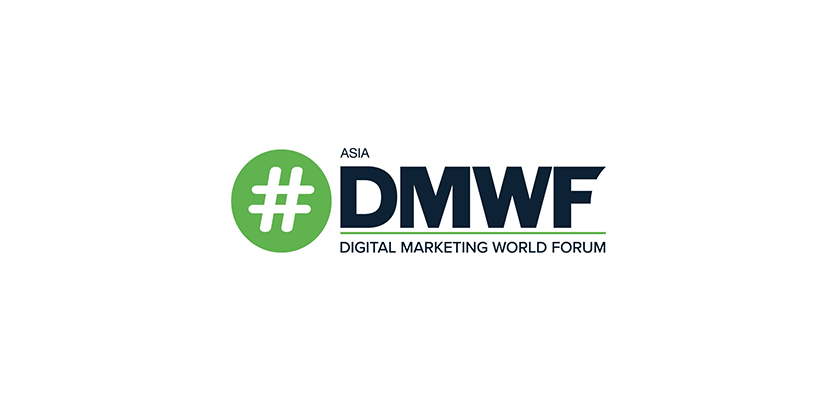
How To Develop A Great Digital Brand With An Appealing Brand Voice
From your emails to social media captions, blog posts and infographics, how your brand’s voice comes across will either encourage or deter your users from interacting with your company again.
You may have had one of those terrible experiences where you call a customer service line and find a rather unpleasant person on the other end. Or maybe you were checking out of Whole Foods and the cashier was speaking to you with an attitude.
Either one of these scenarios would probably leave you with a bad taste in your mouth. And more so, it would deter you from wanting to return to that company because of that negative experience. That’s why a brand’s voice is so important.
Although in-person interactions like the two above are few and far between for eCommerce brands, how you speak to your customers and how your brand comes across via the internet matters!
This blog post will teach you the importance of a brand voice in the digital age and how to build a brand strategy to develop an appealing brand voice.
What Is a Brand Voice?
First and foremost, what is a brand’s voice?
A brand’s voice is how your brand is viewed and perceived by users through your content. It’s how your brand comes across when it communicates with your audience via the internet, print, and in some cases, in-person. But today, we’re strictly talking digital.
As an example of a brand voice, let’s take two fashion brands: Supreme and Nike. If both brands tweeted the words, “New line dropping tonight,” the way that Tweet would be perceived and internalized by users across the internet would be starkly different. Although both brands offer largely the same thing—clothing—that one Tweet has completely different implications for the brands and users alike.
For instance, Supreme has created a brand voice for itself that reads as exclusive and luxurious. Nike has created a brand voice for itself that is very much inclusive and accessible.
While both these brands simply offer clothing for consumers, how these brands are perceived are extremely different?
Through their content.
Each piece of their content, whether it be an email newsletter, a social media page or even the copy on their website, goes into their brand voice. In fact, this kind of branding pays off, as content marketing efforts receive 3x the leads per dollar spent over a paid search.
If this kind of branding seems too far out of your reach, consider looking into a digital marketing agency such as Aumcore that offers brand identity services so you can take your company to the next level.
Unique Brand Examples and Influencer Comments
In order to better understand how to develop a great digital brand, let’s take a look at some companies who are currently killing it with their digital branding.
These brand voice examples will show you how to develop a flexible brand voice that will cater to your specific audience’s needs.
Zola
Zola is an online wedding registry, planner and retailer. Their digital branding is all things love. From the soft color palette to the inviting website copy, all of it makes you feel like you’re speaking to an old friend.
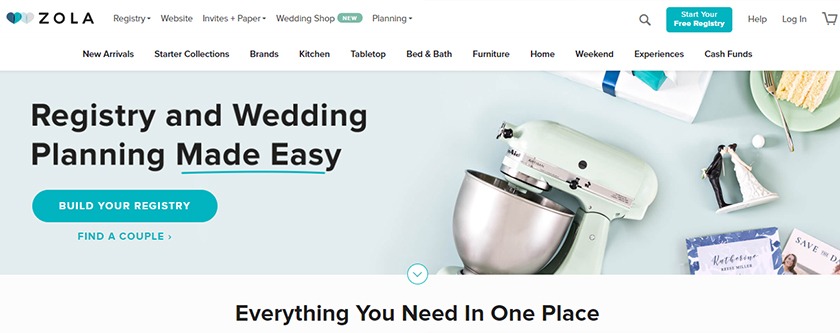
Zola has a distinct brand voice that is consistent throughout its website. Even their social content speaks to their company slogan that their team and company will do anything for love. Overall, Zola’s copy is a clear demonstration of the importance of a brand voice.
Proof Collective
Still, in its early stages, Proof Collective was founded on the principles of necessity and sustainability. These clothing items are sustainable and ethically sourced and will last a lifetime.
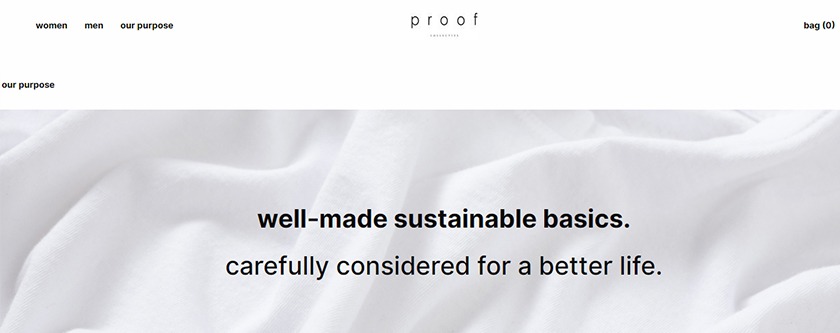
From their clothing designs to the copy describing their process, Proof Collective has already mastered its brand design tone of voice by incorporating their core values into every aspect of their digital presence: Simplicity without sacrificing quality.
Girlboss
Girlboss has blown up in the past couple of years since its inception and creation by Sophia Amoruso. What first began as a title to her book, Girlboss became a brand for all women to acknowledge and own their own power.
From book to a media company, this platform was created so women would have a place to learn, connect and inspire one another. Girlboss has become such a powerful brand that #girlboss has been used over 16.3 million times on Instagram alone.

Their branding can be seen with the strong language they use across the website and in their social media copy. Their brand voice presentation is also apparent in their bold, statement typography and strong design choices across their digital presence.
Each of these three brand identity examples brings something different to the table. Zola’s content shows you that by creating blog posts with a colloquial voice, you can make users feel more comfortable about tackling the messiness that comes with a wedding.
Proof Collective shows you that great branding can be a result of your values. And Girlboss shows you that by writing with strong language and opening up about issues, you can make your audience feel like they can conquer the world.
They each show you a different way you can use a copy of your site, socials or blogs to relate and speak to your audience. Put best by Neil Patel,
If you produce free and helpful content for your target market, they will engage with you, spread your message, and probably even buy from you.
Tips on How to Develop a Great Brand Voice
In order to develop your company’s brand voice, we’ll go over the points you and your team should go over to create and recognize what brand identity elements are and, ultimately, how you want to portray your brand online.
According to Michelle Linn of Content Marketing Institute,
Content marketing takes a lot of work, persistence, and patience – it’s not for everyone. But, it can be an ideal approach if you truly want to provide a better experience for your customers while making a positive impact on the business in terms of its perception and its bottom line.
Your investment of effort will bring you a positive ROI. Let’s see how this is done:
- Audience Research
Get a better understanding of who your audience is. Answer questions like what their age range is, what milestones they are currently going through in life, what their education level is, their geographic location, occupation, etc. This will help you determine how your brand can relate to your users apart from your company’s products and services.
- Competitor Analysis
Keep your friends close, but your enemies closer. Learn about your competitors, what their brand voices are and the tones they use. Is there something that inspires you? Or maybe there’s something you know your business can do better? Don’t be afraid to swim in those waters and figure it out!
- Color Palette and Design
Different colors evoke different emotions. Determine the kind of mood you want to set with your color palette and design when your users go to your website or social pages.
- Tone of Voice and Language
Do you want to sound austere or silly? Do you want users to read your content in a happy tone of voice, or would you rather have them take a more serious tone with your brand?
Try and hone in on the kind of personality your brand should embody on the internet, then support it with the language your brand uses in its digital presence. Are you the kind of brand that curses on social media? Or do you keep everything in a suit and tie? It’s up to you to decide.
- Company Values
What does your company stand for? Increasingly in today’s world, big businesses and small businesses alike are coupling their business objectives with a cause. Consider donating proceeds to a specific charity or associating your brand with a philanthropic cause and promoting it.
Show your users that you care about what they care about and incorporate that into your branding.
- Prepare a Strategy
Once you’ve done all the leg work, prepare a strategy. Sit down with your development team, account executives and marketing team to make the magic happen!
Be sure everyone has a clear understanding of the colors, tone of voice and language to use when creating content for your brand.
- Branding Guidelines
Create a set of guidelines; a list of the do’s and don’ts for all your employees so they know how to stay on brand. From emails to online chats, from infographics to blog posts, make it easy and simple for anyone in your company to follow.
Key Takeaways
Hopefully, we’ve answered all your brand voice questions and you can now begin to create a stellar brand voice of your own. Your brand is your company’s reputation, it’s what you want to be known as and known for. Crafting your brand’s voice will turn you from just another company into something unique that can only be experienced by association with your business.
Here are the key takeaways of our discussion today one more time:
- A brand’s voice is how your brand is viewed
and perceived by users through your content
- Different companies can provide different
examples for how to communicate your brand’s voice
- Developing a great brand voice take’s time
and is a process your team should invest in because the return will truly be
worthwhile
Good luck!




